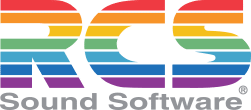This article has multiple issues. Please help improve it or discuss these issues on the talk page . (Learn how and when to remove these template messages) (Learn how and when to remove this template message)
|
The term ripping (slang term for digital media extraction) can also apply to radio. New software, techniques and cloud services now makes it possible to extract the songs played on the radio and digitally save them on separate audio tracks. Available techniques make it possible to rip the music from Internet radio broadcasts, satellite radio broadcasts and FM radio broadcasts.
Ripping is extracting all or parts of digital contents from a container. Originally it meant to rip music out of Amiga games. Later the term was used to extract WAV or MP3 format files from digital audio CDs, but got applied as well to extract the contents of any media, most notably DVD and Blu-ray discs.

Internet radio is a digital audio service transmitted via the Internet. Broadcasting on the Internet is usually referred to as webcasting since it is not transmitted broadly through wireless means. It can either be used as a stand-alone device running through the internet, or as a software running through a single computer.
Satellite radio is defined by the International Telecommunication Union (ITU)'s ITU Radio Regulations (RR) as a broadcasting-satellite service. The satellite's signals are broadcast nationwide, across a much wider geographical area than terrestrial radio stations, and the service is primarily intended for the occupants of motor vehicles. It is available by subscription, mostly commercial free, and offers subscribers more stations and a wider variety of programming options than terrestrial radio.
Contents
- Internet radio
- Satellite radio
- FM radio
- Radio Data System
- Separating music from non-music
- Manual tagging
- Legal issues
- European context
- UK context
- US context
- References
Ripping is more than simply recording the audio. The key aspect of ripping is disambiguation. When ripping songs from any source, the songs should be split into separate tracks or files, and the songs should be tagged. Otherwise, one is simply recording or dubbing the audio.
In sound recording, dubbing is the transfer or copying of previously recorded audio material from one medium to another of the same or a different type. It may be done with a machine designed for this purpose, or by connecting two different machines: one to play back and one to record the signal. The purpose of dubbing may be simply to make multiple copies of audio programs, or it may be done to preserve programs on old media which are deteriorating and may otherwise be lost.








